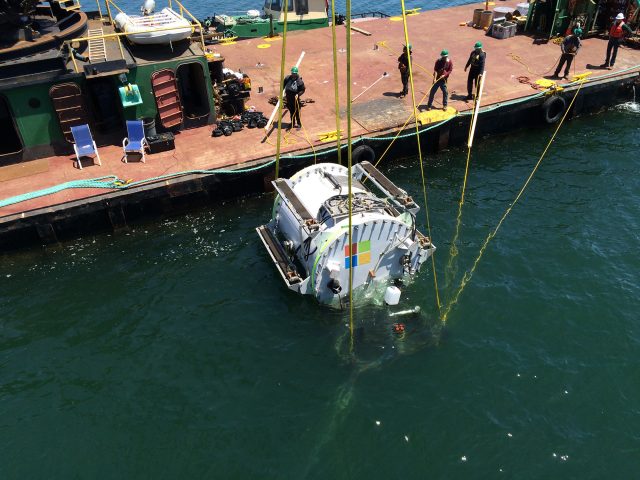
Microsoft CEO Satya Nadella says that underwater server farms are part of the company's plans for future data centers.
Microsoft has been experimenting with underwater servers for some time. Project Natick put a server pod underwater off the coast of California in 2016. Naturally enough, the pod uses water cooling, dumping waste heat into the ocean around it. It's designed as a sealed unit, deployed for five years before being brought back up to the surface and replaced. Since then, Microsoft has deployed a larger pod off the coast of Scotland.
Speaking at the company's Future Decoded conference in London, Nadella said that undersea deployments are "the way [Microsoft] will think about data center regions and expansion." He cites proximity to humans as a particular advantage: about 50 percent of the world's population lives within 120 miles of a coast. Putting servers in the ocean means that they can be near population centers, which in turn ensures lower latencies. Low latencies are particularly important for real-time services, including Microsoft's forthcoming Xcloud game streaming service.
The other big advantage Nadella cited is the speed at which servers can be deployed this way. Without the need to build an actual data center, he said that from start to finish the Scottish pod took just 90 days to build and deploy. This shorter time to market means that the company can be reactive, adding extra server capacity near to where it's needed on demand. This is in contrast to land-based data centers, where the company has to guess what future demand will be and hence how big a site is required.
The Scottish deployment is wind powered, taking its power from the Orkney Islands and their 100-percent renewable generation. As the cost of offshore wind generation continues to fall, one could even imagine that offshore data centers could be paired with offshore wind farms.
reader comments
311